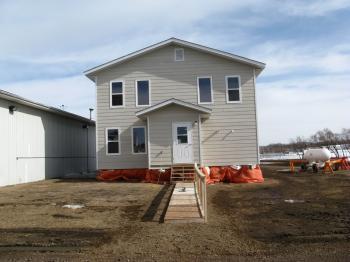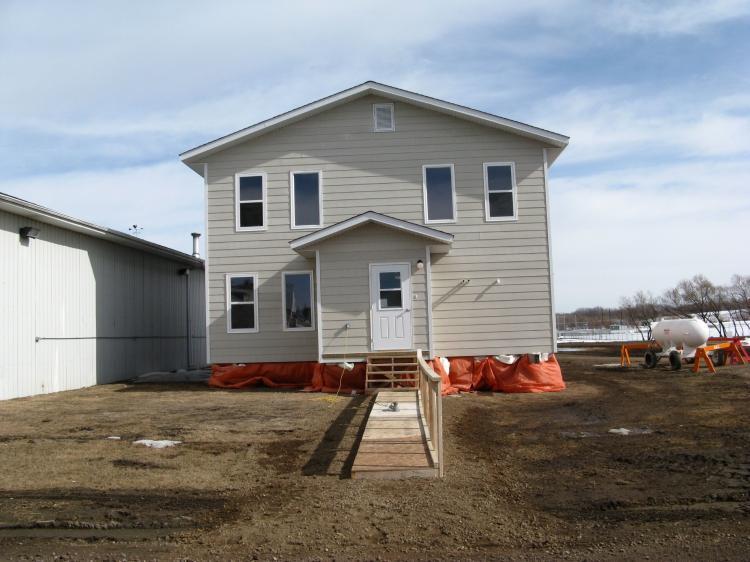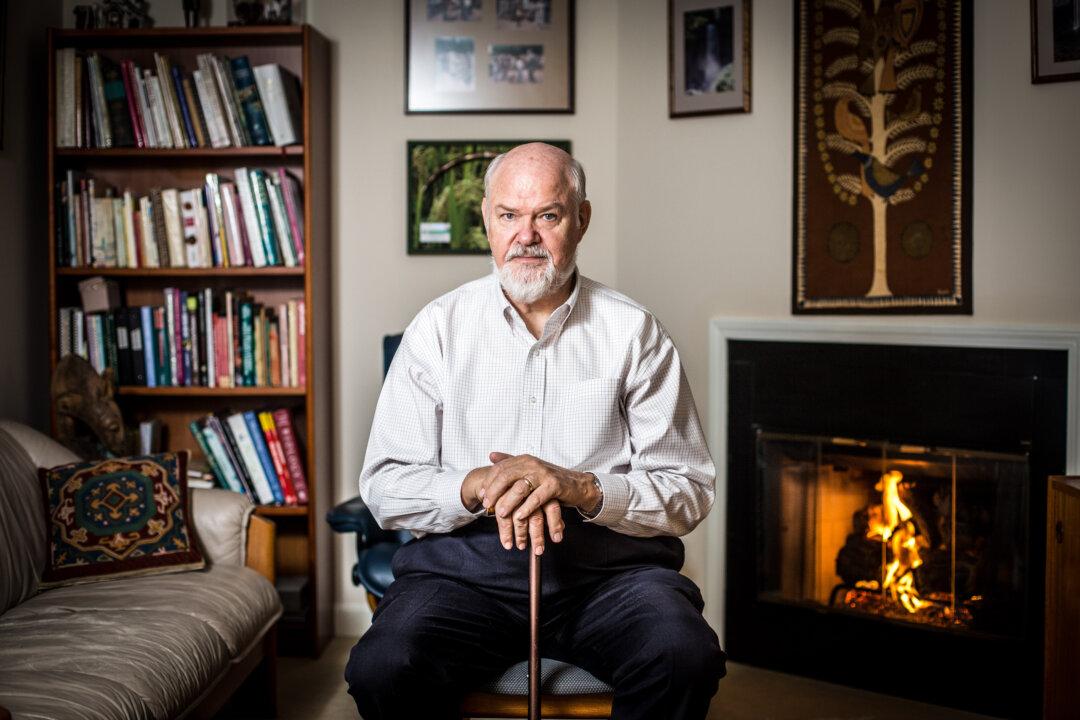A family in need will soon move into a brand new home, thanks in large part to inmates at a Prince Albert, Saskatchewan, prison.
Between September and February, 19 inmates at the minimum-security Riverbend Institution put about 5,000 hours into building a home for a family from the Lac La Ronge First Nation in the province’s north.
The two-storey, 2,000-square-foot energy efficient house was built on correctional facility grounds and then transported on a truck bed to the Lac La Ronge reserve.
The house-building rehabilitation program is part of Correctional Services of Canada’s CORCAN correctional plan for inmates at Riverbend.
“One of the programs that we offer is a 12-week construction training program,” says Travis Boone, regional director for CORCAN in the Prairies.
“This program teaches offenders more than basic construction skills. It’s a five-module, 12-week program that we teach them and then once they’re done that program we offer them practical skills to reinforce what they’ve learned.”
The project—thought to be the first of its kind in Canada—was conceived after government and non-profit stakeholders got together to discuss ways to improve housing shortages on aboriginal reserves.
“It was a joint effort, because we are seeking out partnerships to improving our ability to train in a realistic work environment,” says Boone.
Out of the 19 men that were involved in building the house, nine have been released—five of whom have already found employment in the construction industry.
“We’re training them for what they need to have to get meaningful employment on release,” Boone says.
“Our mandate is to work with the guys and provide them training and skills so that they become employable, so that they want to give back to the community. They’re getting a sense of self-worth and value, and they have marketable employment skills for when they go out into the community.”
There are plans to build more homes in the future, he says.
“Lessons learned, we would build a smaller home, but we are continuing to negotiate how we can continue to deliver this type of program in a correctional environment and building on the partnerships we’ve already created.”
He adds that he would like to see other correctional institutions initiate a similar program.
“This a good example of partnerships between government and non-government agencies. It addresses a real issue for communities and our correctional environment.”
“This is good corrections at work.”
Between September and February, 19 inmates at the minimum-security Riverbend Institution put about 5,000 hours into building a home for a family from the Lac La Ronge First Nation in the province’s north.
The two-storey, 2,000-square-foot energy efficient house was built on correctional facility grounds and then transported on a truck bed to the Lac La Ronge reserve.
The house-building rehabilitation program is part of Correctional Services of Canada’s CORCAN correctional plan for inmates at Riverbend.
“One of the programs that we offer is a 12-week construction training program,” says Travis Boone, regional director for CORCAN in the Prairies.
“This program teaches offenders more than basic construction skills. It’s a five-module, 12-week program that we teach them and then once they’re done that program we offer them practical skills to reinforce what they’ve learned.”
The project—thought to be the first of its kind in Canada—was conceived after government and non-profit stakeholders got together to discuss ways to improve housing shortages on aboriginal reserves.
“It was a joint effort, because we are seeking out partnerships to improving our ability to train in a realistic work environment,” says Boone.
Out of the 19 men that were involved in building the house, nine have been released—five of whom have already found employment in the construction industry.
“We’re training them for what they need to have to get meaningful employment on release,” Boone says.
“Our mandate is to work with the guys and provide them training and skills so that they become employable, so that they want to give back to the community. They’re getting a sense of self-worth and value, and they have marketable employment skills for when they go out into the community.”
There are plans to build more homes in the future, he says.
“Lessons learned, we would build a smaller home, but we are continuing to negotiate how we can continue to deliver this type of program in a correctional environment and building on the partnerships we’ve already created.”
He adds that he would like to see other correctional institutions initiate a similar program.
“This a good example of partnerships between government and non-government agencies. It addresses a real issue for communities and our correctional environment.”
“This is good corrections at work.”







